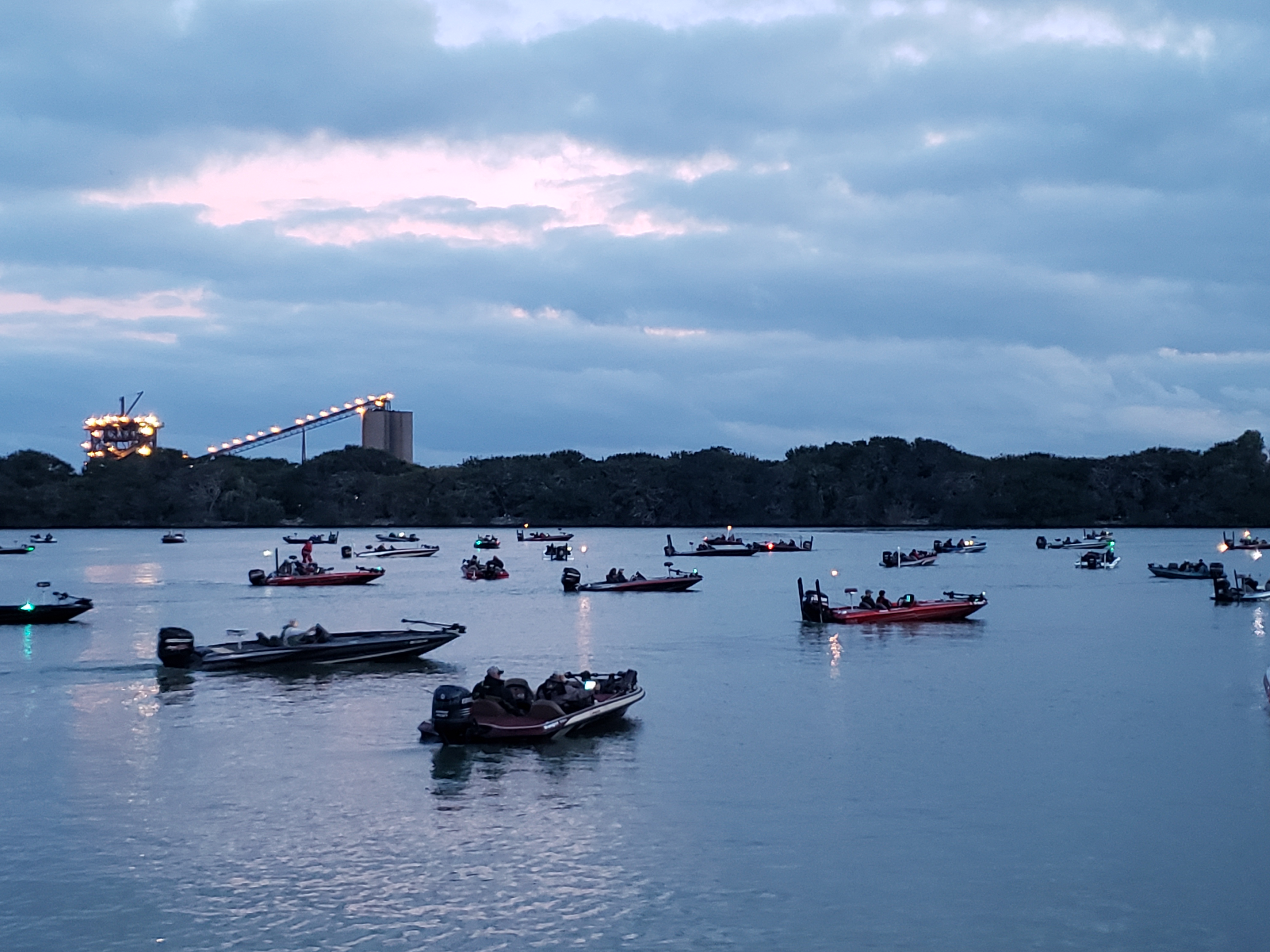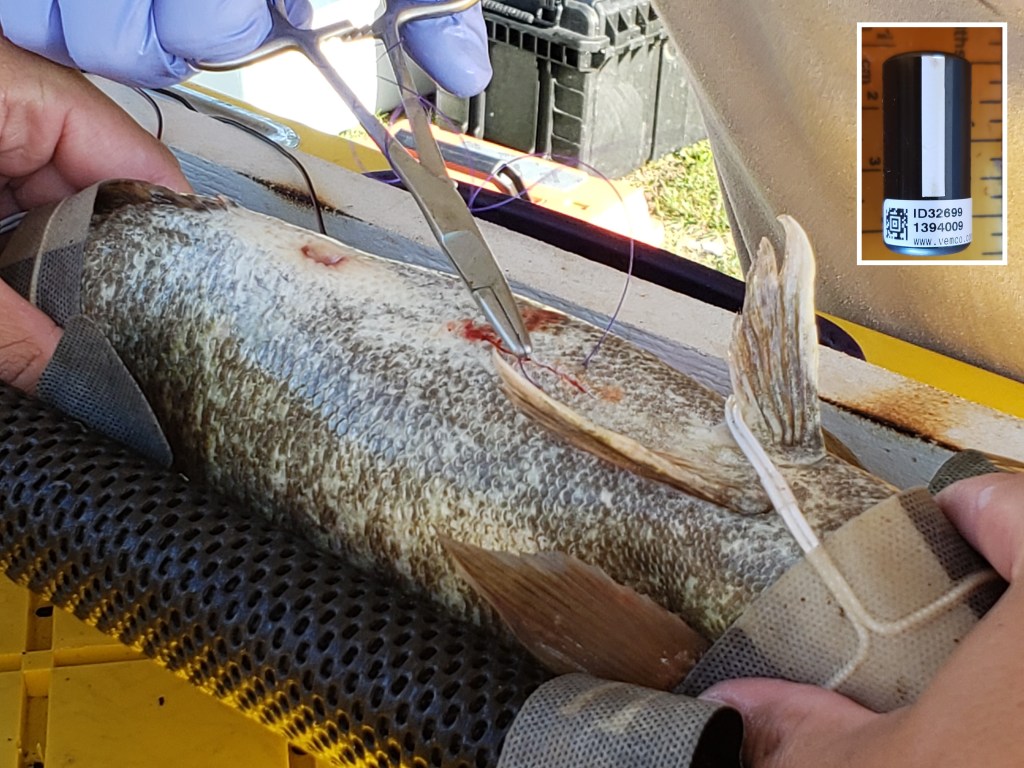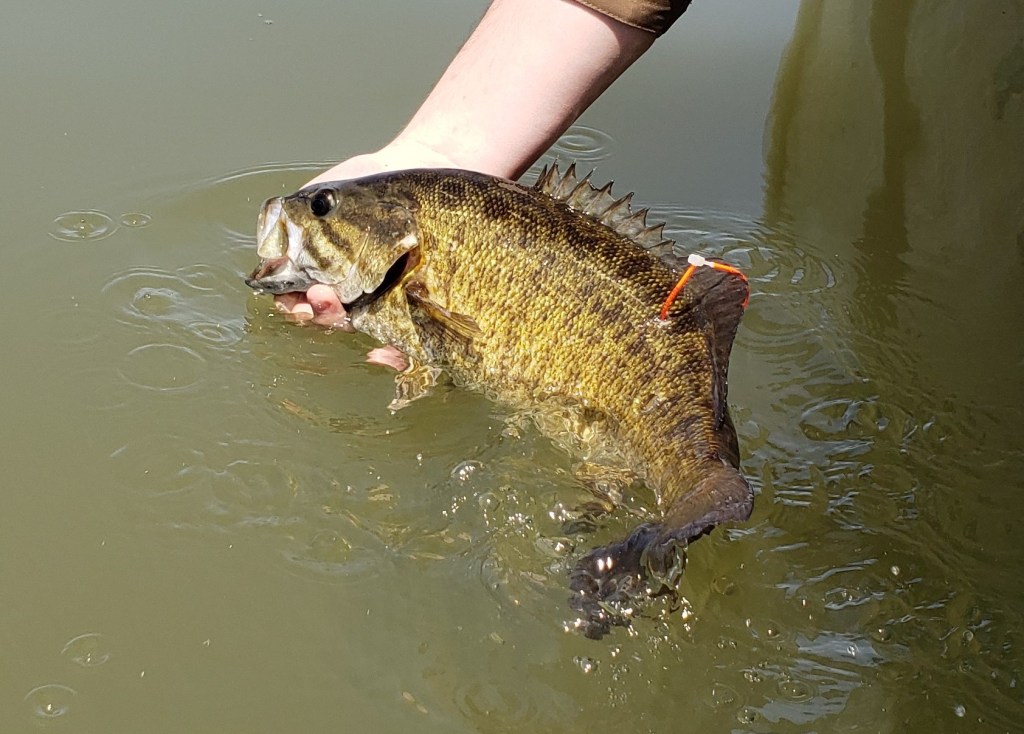
by Zak Slagle, Fisheries Biologist, Ohio DNR Division of Wildlife, Sandusky Fisheries Research Station
Anglers often wonder what happened when a recent fishing hot spot goes cold – are those fish still there and just not biting? Or did they move on to other parts of the lake? There’s also the age-old debate about homebodies – do bass hang out in one spot their whole lives, or do they make long-distance movements? A recent study on Lake Erie has started to reveal just how far smallmouth bass can move.
In 2018, the Ohio Division of Wildlife tagged 23 smallmouth bass with acoustic transmitters – technology that allows us to implant a tracking device into the fish’s body. These fish were tagged and released after weigh-in at the Ohio Bass Federation’s National Semifinal held out of Sandusky, Ohio; anglers also provided the general area of capture sites for each fish. The goals of this study were to find out how quickly the smallmouth moved away from the release site and whether they made it back into Lake Erie proper – roughly a 3 mile straight shot across Sandusky Bay. These fish were released an average of 15 miles from their capture locations – a substantial distance if smallmouth are homebodies. A network of receivers in the lake and bay were listening for tag signals to track how fast these fish moved.

Two months after the bass were released, the receivers were retrieved and the data downloaded. And where had these fish gone? As it turned out, all of the surviving tagged fish did leave the release site, but it took an average of two weeks for them to leave. About 60% of the tagged smallmouth made it back into Lake Erie, which took about 20 days on average. Two months after being released, about 40% of tagged fish remained in Sandusky Bay. Bass scientists refer to these concentrations of fish near popular release sites as stockpiling. The next time you’re out on the water, you might think twice about making a long run – those stockpiled fish might be right under your boat! We don’t know where these stockpiled fish went after two months – only that they didn’t make large movements across the lake. While there are hundreds of receivers listening all across Lake Erie, many are spaced about 10 miles apart, meaning there are plenty of “holes” in the receiver network that fish can hide in. These low-movement fish could have remained in the bay, returned to the main lake but were never near a receiver, or died of natural causes.
See the movement of the smallmouth bass after release.
This tracking study didn’t end there, either. We were able to track eight of those original smallmouth moving out in the main lake, thanks to an international group that maintains a much larger receiver network: the Great Lakes Acoustic Telemetry Observation System. Over the two years of tag battery life, these smallmouth bass moved an average of 70 miles per year! One tagged bass moved a total of 313 miles over two years – crossing into both Canadian and Michigan waters and traveling the furthest distance known for an individual smallmouth bass. Several fish returned to capture locations in the Ohio islands region (although we were unable to match specific fish to specific capture sites). Generally, bass seemed to move into deeper waters north of the Ontario border, then returned to Ohio waters in the spring; bass made their biggest movements in the spring (April through May). Big movements like this show that at tournament-released fish have the potential to return to their preferred habitat, even in one of the world’s largest lakes. However, these movements likely represent the high end of smallmouth bass movement capability – some individuals likely don’t make long-distance movements and live their entire lives in the same general area, but our initial study wasn’t sufficient to categorize those movements. We also don’t know if these movements reflect natural behavior; when a bass is caught and transported long distances, previous research shows that these fish are prone to moving longer distances than might be expected.

While this study is now over, we have bigger plans to better understand smallmouth bass natural movements. In the next two years, Ohio Division of Wildlife staff will tag over 200 smallmouth bass in Lake Erie and its tributaries, using a variety of capture methods and releasing tagged fish where they were captured. We hope to better understand natural movements, for example, what proportion of the smallmouth bass population makes long-distance movements? We will also examine seasonal migrations and timing of movement to spawning grounds. In a few years, not only will we understand how far they move, but also when (and perhaps why) smallmouth bass make these long-distance movements.




